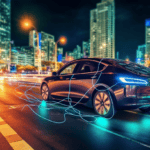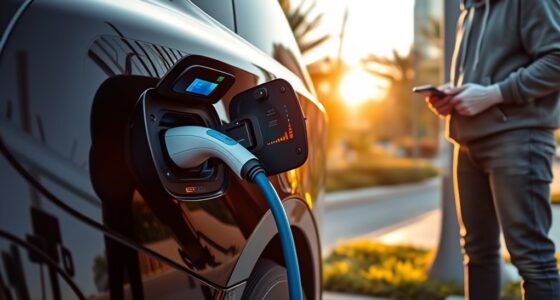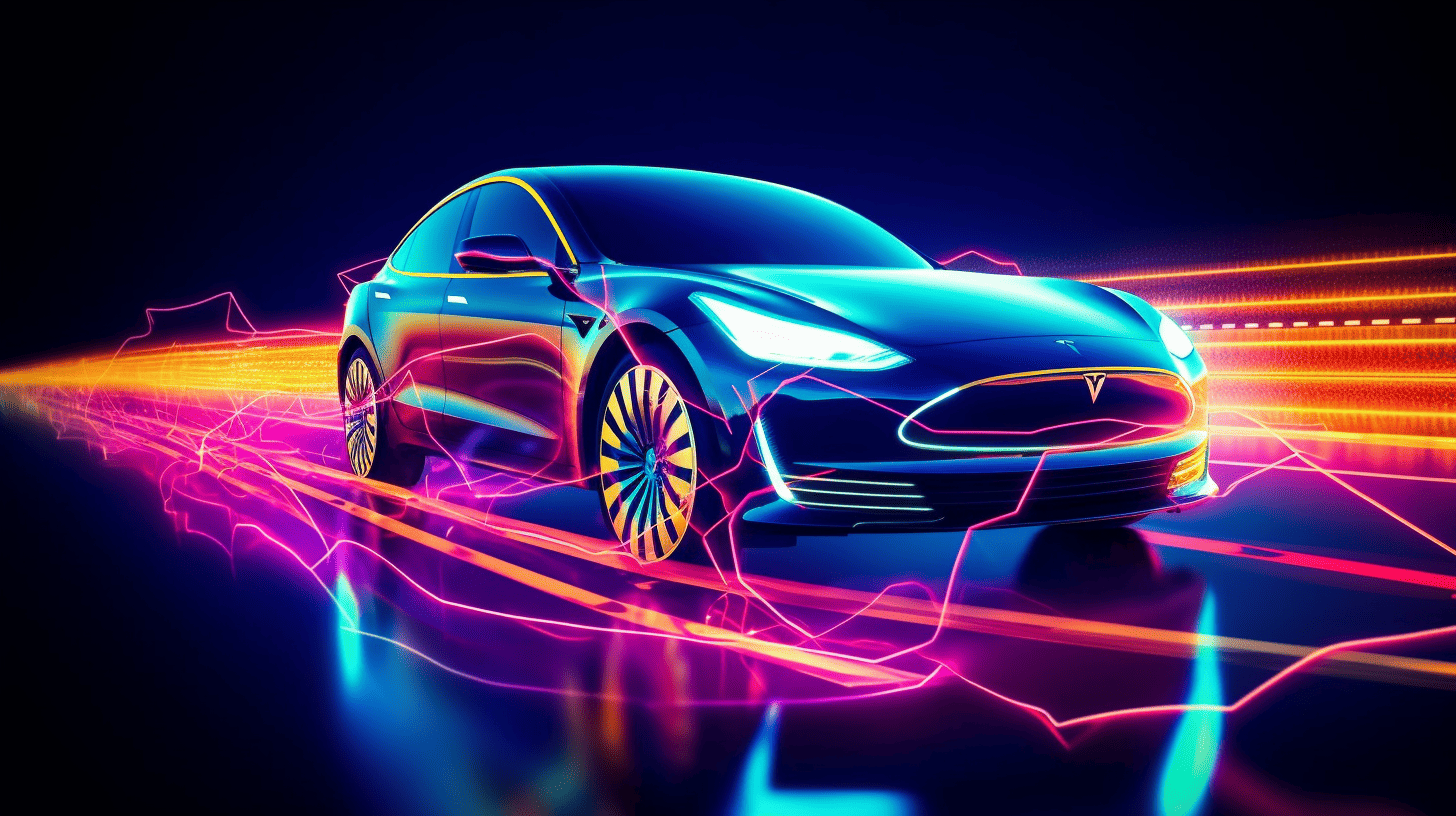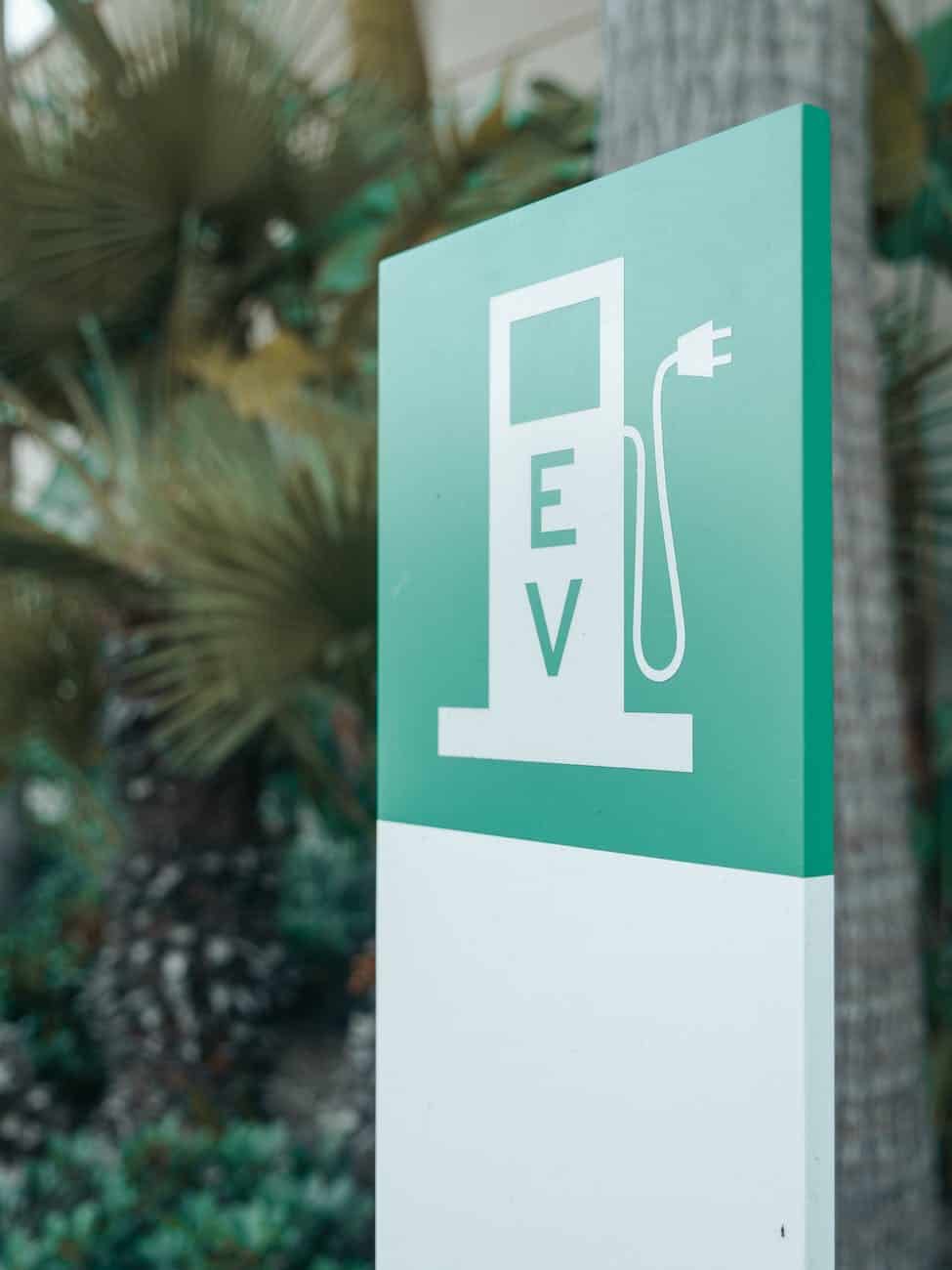The shift towards electric vehicles (EVs) is becoming more crucial in combating climate change. Government initiatives are essential in motivating individuals to transition from conventional gasoline and diesel vehicles to EVs, which produce fewer emissions and are significantly more beneficial for the environment.
In this article, I will discuss the various government policies that are currently being used to promote EV adoption and assess their effectiveness.
As more governments around the world set ambitious targets for reducing carbon emissions, they must adopt effective measures to ensure these goals can be met. One such measure is incentivizing people to purchase EVs by offering subsidies or tax credits; examples of countries doing this include Norway, France, China, Canada and India.
These incentives often come with favorable terms such as reduced registration fees or exemption from certain toll charges. Additionally, many cities are creating special parking spaces or free charging facilities exclusively for EV users.
Finally, information campaigns also form an integral part of many government strategies when it comes to promoting EV use. Such initiatives usually involve raising public awareness about the benefits of switching to an EV through digital marketing campaigns or informative events held at schools and universities across the country.
All of these efforts aim to make people aware that having an EV is not only good for the environment but also beneficial for them financially in terms of savings on fuel costs and vehicle taxes.
Definition Of Electric Vehicles
Electric Vehicles (EVs) are becoming increasingly popular with consumers due to their environmental and economic benefits. An EV is a vehicle powered solely by an electric motor, typically using stored electricity in the form of a battery pack or other energy storage device. EVs are distinct from hybrid vehicles that combine both gas-powered and electric components.
The definition of an EV encompasses a wide range of automobiles such as passenger cars, light commercial vans, two-wheelers, buses, trucks and trains.
The primary benefit of EVs compared to traditional gasoline-based vehicles is reduced emissions of air pollutants since they don’t require combustion engines for propulsion. This has significant positive implications for tackling climate change on local levels through improved air quality in cities as well as globally via fewer greenhouse gas emissions overall.
Additionally, EVs have lower fuel costs than conventional cars thanks to cheaper electricity rates compared to gasoline prices.
Given these advantages, governments around the world are taking steps to encourage adoption of EVs by providing incentives and programs designed to make them more accessible and affordable for individuals and businesses alike. In this section we will provide an overview of some government policies currently being implemented to facilitate further uptake of EVs across various industries.
Overview Of Government Programs
Having established what electric vehicles are, the next step is to consider how government policies can promote their adoption. Governments throughout the world have implemented a variety of programs and initiatives aimed at encouraging the use of electric vehicles and mitigating the cost associated with their purchase.
These programs may include tax incentives, subsidies for purchasing an electric vehicle, or research grants for developing new technologies that could help increase demand for EVs.
In addition to these financial incentives, some governments have also adopted measures such as increasing access to charging infrastructure or providing discounts on parking fees for EV owners. In this way, they hope to encourage more people to make the switch from conventional gasoline-powered cars to electric vehicles.
The potential benefits of increased adoption of EVs go beyond simply reducing emissions. Electric vehicles can be quieter than traditional cars and require less maintenance – both factors which could lead to improved air quality in cities where traffic noise is a problem.
Furthermore, since electricity prices are generally lower than gas prices, adopting an EV could also translate into reduced costs for consumers over time. With so many potential advantages to using EVs, it’s easy to see why governments would want to incentivize their adoption through various policy instruments.
Tax Incentives And Subsidies
Tax incentives and subsidies are two government policies that have proven effective in promoting the adoption of electric vehicles. Tax incentives reduce the cost of purchasing an electric vehicle, making them more accessible to a broader range of consumers.
Subsidies also help lower costs by providing funding for research and development of new technologies associated with electric vehicles. By reducing the financial burden on purchasers, both tax incentives and subsidies can encourage people to switch from gasoline-powered cars to electric ones.
The benefits of these types of government policies go beyond just helping individuals save money. When there is an increase in demand for electric vehicles due to their affordability, manufacturers will be motivated to develop newer models at competitive prices.
This could result in increased production volumes which would lead to greater economies of scale, further driving down costs and increasing accessibility even more. Additionally, when governments provide subsidies they create positive externalities such as environmental sustainability and economic growth through job creation within related industries like automotive manufacturing or energy generation.
Overall, tax incentives and subsidies represent highly effective tools for increasing the adoption rate of electric vehicles. These complex policy instruments offer multiple advantages not only to individual buyers but also to society as a whole by creating a virtuous cycle between reduced prices, higher demand, improved technology and larger markets that ultimately benefit everyone involved.
With this in mind, it’s clear why infrastructure development should be considered alongside initiatives like tax incentives and subsidies when trying to maximize the impact of government policies on EV uptake rates.
Infrastructure Development
The development of infrastructure is critical to the adoption of electric vehicles. Take Norway, for example; it’s been one of the most successful countries in terms of EV uptake due to its massive investment in charging infrastructure and other incentives.
The Norwegian government has implemented a comprehensive policy package to support EVs, including tax exemptions, free public parking, access to bus lanes, and generous subsidies on both EVs and electric vehicle charging points. This approach has led to an impressive number of new electric cars on the roads – now over 50% of all newly registered vehicles are electric.
Government policies can also help boost the proliferation of electric vehicle charging infrastructure. In Singapore, for instance, the National Environment Agency provides financial incentives for businesses that install EV chargers at their premises.
This incentive program helps ensure that there will be plenty of convenient locations where drivers can charge their cars when needed. Additionally, governments may provide funding or technical assistance to companies developing new technologies related to EV charging infrastructure such as smart grid systems and wireless charging solutions.
Overall, governments play a key role in promoting the adoption of electric vehicles by providing incentives for individuals and businesses alike while investing in necessary infrastructure and technological advancements. By taking these steps towards creating an environment conducive to EVs, governments around the world can make great strides toward reducing emissions from transportation sources and transitioning away from fossil fuels.
Education And Awareness Campaigns
Having discussed the development of necessary infrastructure for the widespread adoption of electric vehicles, it is now time to turn our attention to other important measures that can be taken by governments in order to promote the uptake of EVs. Education and awareness campaigns play a key role in encouraging people to switch from fossil fuel-powered cars to emissions-free alternatives.
Government initiatives must focus on informing citizens about the benefits as well as potential drawbacks associated with EV ownership, while also making sure that there are sufficient charging points available.
Government campaigns should include public outreach activities such as television adverts, radio spots and print media which communicate the advantages of owning an electric vehicle. Through these methods, consumers will become aware of how they can save money through reduced energy costs compared to traditional petrol or diesel-fuelled engines.
Additionally, educational materials could be provided at local events and distributed to schools so children may grow up understanding the importance of using renewable energies instead of polluting ones.
Lastly, awareness campaigns need to target those who have not yet considered purchasing an electric car but would benefit most from doing so; this includes low-income households whose monthly bills could drastically reduce if they switched from a combustion engine vehicle to an all-electric one.
Governments must ensure that their messaging reaches everyone regardless of socio-economic status or background, since this is essential for creating a more equitable society where the transition away from fossil fuels can occur.
To move forward we must look at what regulatory framework needs to be put into place for successful mass adoption of EVs across different countries.
Regulatory Framework
It is evident that government policies have a pivotal role in promoting the adoption of electric vehicles. The regulatory framework, which includes public policy and government regulations, has been crucial in driving EV uptake. This can be seen through various studies, showing how supportive EV-related regulations such as emissions standards have largely impacted consumer behaviour.
The case for embracing an effective regulatory environment to support the use of electric vehicles has become increasingly important as governments look towards decarbonizing transport systems.
In order to achieve this goal, regulators must establish stringent rules for all conventional vehicle manufacturers to encourage them to switch over to producing more environmentally friendly alternatives. It is also necessary to design incentives for consumers who switch from gasoline or diesel engines to electrified powertrains. Such measures could include tax credits or other forms of financial assistance.
Overall, it’s clear that properly enforced regulations that promote electric vehicle usage offer immense potential benefits both at the national and local level by reducing carbon dioxide emissions and improving air quality. To further strengthen these efforts, governments should consider setting ambitious carbon emission reduction targets beyond those already set out in their current energy plans.
Carbon Emission Reduction Targets
The next step in promoting the adoption of electric vehicles through government policies is to focus on carbon emission reduction targets. By setting aggressive, achievable goals for reducing emissions from transportation sources, governments can drive EV adoption and help reduce their climate impact.
Governments can also incentivize EV adoption by providing tax credits or subsidies for purchase or installation of charging infrastructure. This will make it easier for consumers to make the switch to EVs, while helping to create a market that encourages further adoption.
In addition, governments should consider investing in public education campaigns about the benefits of electric vehicles as well as funding research into new technologies that could improve EV performance and affordability. These efforts would increase consumer awareness of EVs and build trust in these vehicles as reliable alternatives to traditional cars powered by fossil fuels.
Finally, this discussion must include a cost-benefit analysis of adopting EVs over other types of vehicle technology. With an understanding of how much it costs compared to what potential savings are available, policy makers can craft incentives that encourage individuals and businesses alike to move towards more sustainable forms of transport.
Cost-Benefit Analysis Of Adoption
As a policy analyst, I must consider the cost-benefit of government policies in promoting electric vehicle adoption. To do this I’ll analyze both monetary and environmental impacts.
Monetary Impacts:
- Positive:
- Government subsidies will lower the cost of electric vehicles for consumers.
- Investing in charging infrastructure can create jobs and stimulate local economies.
- Negative:
- Financial incentives or rebates might be expensive to implement at times depending on the scale.
- Taxpayer money may be used to fund these initiatives which could lead to increased taxes or decreased government services.
Environmental Impacts:
- Positive:
- Adopting electric vehicles would reduce emissions from transportation sources such as carbon dioxide and other pollutants like nitrogen oxides and particulate matter..
- This reduction could help slow global warming effects by reducing greenhouse gas levels.
- Negative:
- The production of batteries needed for electric cars require large amounts of energy which means more pollution is created during manufacturing processes than with traditional gasoline engines.
Ultimately, when weighing the pros and cons of government policies that promote adoption of electric vehicles, it’s important to look at both short-term economic benefits against long-term environmental costs.
Moving forward, I will now explore potential barriers to adoption so we can better understand how best to incentivize people towards making this switch.
Barriers To Adoption
The barriers to the adoption of electric vehicles are numerous. Firstly, there is a lack of consumer familiarity with such vehicles due to their recent introduction in the auto market and thus many consumers remain hesitant about them.
Secondly, electric cars have limited range capacity compared to conventional cars; this can lead to potential battery power issues for long-distance travel. Thirdly, charging station availability remains low across much of North America, making it difficult for certain drivers to find an accessible location to charge up their vehicle.
Fourthly, electric cars are more expensive upfront than traditional gasoline powered ones which may be cost prohibitive for some people. Lastly, infrastructure investment has been slow in coming from both public and private sources despite government incentives being offered for installing these stations or creating subsidies for purchasing such vehicles.
These factors combined create significant roadblocks that must be addressed before widespread adoption of electric cars will occur. Clearly, further investment is needed by all stakeholders if we want to see meaningful progress towards increasing use and acceptance of electric vehicles among consumers throughout North America.
Fortunately, governments at both local and national levels appear committed to developing strategies that address these barriers head on so that people can become familiar with this new technology and feel comfortable enough using it as a viable transportation alternative in the future.
Future Outlook
The future outlook of electric vehicle adoption is like a blank canvas. With the right policies and initiatives, it can be filled with vibrant colors that signify progress towards combating climate change. In order to reach this goal, policy innovation in green transportation must take center stage. Below I have outlined three key areas for policy makers to focus their attention on:
| Policy Objective | Action Required | Impact |
|---|---|---|
| Encourage EV ownership | Provide incentives such as tax credits or access to special parking spots | Increase public interest in EVs leading to higher sales figures |
| Create infrastructure support network | Invest in public charging stations and increase consumer awareness about these options | Enhance range anxiety and make owning an EV more feasible over the long term |
| Develop renewable energy sources | Transition away from fossil fuels towards solar, wind and other renewables | Reduce emissions generated by EVs running on non-renewable electricity sources |
These objectives will give policy makers the tools they need to promote electric vehicles as viable transport solutions. They will also help stimulate economic growth through increased spending on innovative technologies.
By creating a supportive framework for electric vehicle adoption, governments can create social benefits such as improved air quality, reduced greenhouse gases and job creation within the industry itself. As we look forward into the future, taking bold steps now could set us up for success in combatting climate change while revolutionizing how we think about green transportation.
Frequently Asked Questions
What Is The Expected Cost Of Electric Vehicle Ownership?
When looking at the cost of electric vehicle ownership, there are a variety of expenses to consider. EV costs include the initial purchase price, plus any additional features such as charging infrastructure or maintenance plans. In addition, EV owners must factor in fuel costs and insurance premiums into their budgeting process. All these factors combine to create an overall cost of ownership that should be considered when evaluating whether purchasing an electric car is right for you.
The actual cost of owning an electric vehicle will vary based on several factors. The make and model of the car can have a big impact on the total expense associated with it.
Additionally, local taxes, availability of charging stations and other incentives may influence the final price tag for your new ride. It’s important to do your research before committing to buying an EV so you know exactly what you’re getting yourself into financially.
Policy makers also play a role in helping consumers understand how much money they need to set aside for their electric vehicles over the long term. By providing information about subsidies, tax credits and other possible methods of reducing the cost burden associated with EVs, government entities can help people better evaluate if going green is worth it from both an environmental and financial perspective.
Ultimately, understanding all aspects related to EV ownership helps individuals decide if electric cars are right for them now – and in the future too!
Are There Any Government Incentives For Purchasing An Electric Vehicle?
It’s like a game of chess. Governments are strategically positioning incentives as pieces on the board to encourage more people to adopt electric vehicles (EVs). What kind of government incentives can buyers expect when purchasing an EV? Let’s explore this in further detail.
Government electric car subsidies, tax credits, rebates and grants for EVs have become increasingly common since their introduction into the market. Incentives vary from state to state but generally include discounts on vehicle registration fees, access to high occupancy lanes with no additional fee, and even exemptions from certain emissions tests.
Tax credits are also available for those who purchase new or used EVs; these range from federal tax reductions all the way up to full exemption from sales taxes in some states. Rebates may be offered through utility companies that provide electricity to customers who install charging stations at home or business locations. Finally, governments may offer grants for EV research and development initiatives.
These types of incentives were put in place by governments worldwide as part of efforts to reduce greenhouse gas emissions and promote clean energy sources such as solar power and wind energy.
While they do not necessarily make buying an EV cheaper than an equivalent gasoline vehicle, they can help offset some costs associated with ownership such as the installation of charging infrastructure and fuel purchases. Moreover, providing such financial support sends a clear signal that governments are committed to investing in renewable energy options which encourages more people to consider making the switch away from traditional fossil fuels to cleaner alternatives.
The sum total of these various incentive programs provides potential buyers with multiple ways in which they can save money while still taking advantage of modern technology advancements in green motoring solutions. It is encouraging that governments recognize how important it is for us all to move towards a greener future and take steps necessary towards achieving it – one electric car sale at a time!
How Long Does It Take To Charge An Electric Vehicle?
Charging an electric vehicle is a key factor when considering purchasing one. The charging time can range depending on the type of charger and battery capacity, so it’s important to understand how long it takes to charge an electric vehicle before making the commitment. As a policy analyst, I will explore this topic in three paragraphs.
Firstly, there are two main types of chargers that affect the charging speed: Level 1 (120V) and Level 2 (240V). A Level 1 charger typically charges 5-7 miles per hour while a Level 2 charger charges 25-50 miles per hour. This means that most electric vehicles take around 6 hours to fully charge with a level 1 charger and between 3-5 hours with a level 2 charger. However, some newer models such as Tesla offer fast chargers which reduce charging time significantly – even down to 30 minutes for some cars!
Secondly, the battery capacity also affects how long it takes to charge an electric vehicle. If your car has a larger battery capacity then you may need more time than someone who has a smaller model with less energy requirements. Additionally, if you use your car often or drive long distances then your battery may deplete faster which increases the amount of charging time needed for each journey.
Finally, understanding how long it takes to charge an electric vehicle is essential for any prospective buyers looking into buying one. With different factors affecting the charging speed including type of charger and battery capacity, researching these elements should be done before committing to purchase any electric vehicles.
What Are The Environmental Benefits Of Electric Vehicles?
Electric vehicles (EVs) are becoming increasingly popular due to their environmental benefits. EVs offer a number of advantages over traditional gasoline powered cars, such as reduced emissions and improved air quality. Additionally, they can help reduce noise pollution and enable the use of renewable energy sources in transportation. This article will explore how electric vehicles contribute to reducing carbon footprints, improving air quality, decreasing noise pollution, and enabling the use of renewable energy sources.
The most notable benefit of owning an EV is that it drastically reduces your carbon footprint compared to driving a regular car. The majority of electricity used to power EVs comes from low-emission sources like solar or wind energy, thus helping reduce overall greenhouse gas emissions into the atmosphere. Furthermore, studies have shown that electric vehicle ownership decreases individual contribution to global warming by up to 70%.
In addition to their positive impact on climate change, electric vehicles also improve air quality by emitting fewer pollutants than conventional gasoline powered cars. By eliminating tailpipe emissions from combustion engines, EVs significantly reduce smog-forming chemicals that would otherwise be released into the environment. In urban areas where air quality is already poor due to high levels of traffic congestion, this reduction in exhaust fumes helps keep dangerous substances out of the air we breathe.
Finally, electric vehicles also provide a quieter option for drivers who want to avoid excess engine noise when traveling through residential areas or other quiet environments. For example, some newer models produce only about half as much audible sound as gasoline powered cars while still providing sufficient warning signals for pedestrians and cyclists on roadsides. As more people opt for EVs instead of internal combustion engines, these types of reductions in noise pollution could become even more noticeable over time.
By utilizing renewable energy sources and producing virtually no pollutants or harmful gases—aside from those produced during manufacturing—electric vehicles offer a major advantage for both individuals looking for greener modes of transport and governments aiming to achieve various policy objectives related to sustainability initiatives in their countries. All things considered, investing in an EV is one way citizens around the world can do their part towards mitigating climate change effects while simultaneously enjoying many personal benefits associated with cleaner transportation solutions.
Are There Any Safety Concerns Associated With Electric Vehicles?
When discussing electric vehicles, one issue that needs to be considered is safety. There are a number of potential safety concerns associated with electric vehicles, including crash performance and fire risk. To assess the true level of safety associated with electric vehicles, it’s important to consider how they compare to their gasoline-powered counterparts.
Electric vehicle safety has come under scrutiny due to the fact that crashes involving these types of cars can sometimes result in more severe injuries than those caused by traditional gasoline-powered vehicles. This is primarily due to differences in the way energy is absorbed during collisions between an electric vehicle and another car or object. Additionally, some studies have suggested that lithium battery packs used in many electric vehicles may be prone to catching fire if exposed to extreme temperatures or high levels of shock.
In terms of charging electric vehicles safely, there are several precautions owners should take when using public chargers or home units. Plugging into unapproved charging stations could potentially cause damage to your vehicle’s electrical system as well as void any warranties provided by manufacturers. Furthermore, installing a Level 2 charger at home will require wiring changes within your house unless you’re already equipped for this type of connection. It’s also important to note that while most electric vehicle fires occur either during charging or shortly after disconnecting from power sources, there are still steps drivers can take to mitigate this risk such as avoiding leaving their car unattended when plugged in overnight and not topping off the charge beyond what is recommended by the manufacturer.
Overall, although there are legitimate safety concerns related to driving and owning an electric vehicle, these issues do not necessarily outweigh its environmental benefits compared to traditional gas-powered automobiles. Therefore, taking proper precautions when operating an electric car and understanding potential risks should help ensure safe usage without compromising on sustainability goals.
Conclusion
The adoption of electric vehicles is becoming increasingly important as the global population grows and climate change becomes a pressing concern. It’s clear that government policies play an essential role in encouraging people to switch from gasoline-powered cars to electric ones.
For example, many countries offer tax breaks or other incentives for individuals who purchase electric vehicles. This helps to offset some of the cost associated with EV ownership, making them more appealing to potential buyers. Additionally, governments can provide access to charging infrastructure, helping drivers stay on the road longer without worrying about running out of power.
In conclusion, it’s evident that government policies have an important part to play in promoting the adoption of electric vehicles. By offering financial incentives and providing access to charging infrastructure, governments can make EVs much more attractive options compared to traditional gasoline-powered cars. In doing so, we can help reduce our carbon footprint and create healthier living environments for current and future generations alike.
















